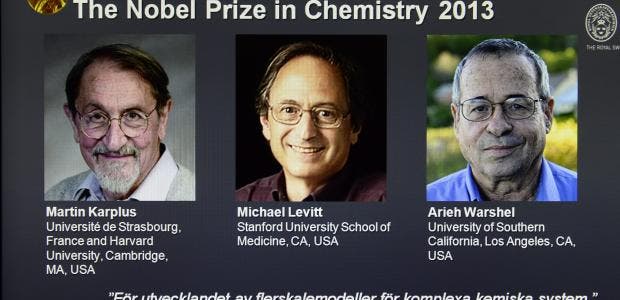Martin Karplus, Michael Levitt and Arieh Warshel won the 2013 Nobel Prize For Chemistry on Wednesday “for the development of multiscale models for complex chemical systems.”
Chemists used to create atomic models using balls and sticks. Some 40 years ago, Martin Karplus, Michael Levitt and Arieh Warshel laid the foundation for the powerful programs that are used to understand and predict chemical processes. Because chemical reactions occur so incredibly fast (in a fraction
of a millisecond, electrons jump from one atomic nucleus to the other) traditional chemistry has had an incredibly hard time keeping up. But the work of the trio went a long way to bridging that gap. Aided by the methods now awarded with the Nobel Prize in Chemistry, scientists let computers unveil chemical processes.
Furthermore, the work of Karplus, Levitt and Warshel allowed chemists to use both Newton’s classical
physics work and the fundamentally different the fundamentally different quantum physics.
“In short what we developed is a way which requires computers to look, to take the structure of the protein and then to eventually understand how exactly it does what it does,” Warshel said.
Was this helpful?




